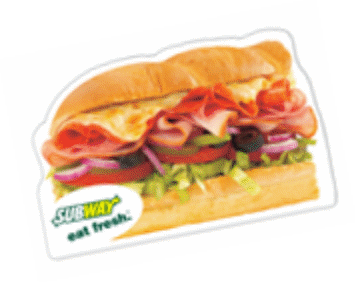Introduction
Advertising is a marketing tool that aims at persuading target customers to buy a certain product; they are also designed to differentiate a company’s products by a glance (Hsuen-Ho & Jia-Wei, 2010). Subway is a leading world fresh-made sandwich provider with 33318 restaurants distributed in 92 countries. Other than itself operating from a central point, it franchises its name.
The restaurant was established in 1965 by Fred DeLuca and Dr. Peter Buck; the company has a robust marketing team that uses different marketing channels to sell its products. Advertising in the company is managed by Subway Franchisee Advertising Fund Trust (SFAFT); some of the media used include electronic and print Medias (Subway official website, 2011). This paper analyzes the effectiveness of an online advert for a company’s sandwich posted on its official website.

Adverts communication
The advert clearly defines the components of the company’s sandwich, with the advert; potential customers can be able to differentiate the product from those offered by competitors. The components can be correctly predicted and the size of the sandwich can be predicted. Looking at the sandwiched vegetables, a potential customer can tell they are fresh, to reinforce the advert, the company has a tag with the advert.
Differentiation of the product
Looking at the advert, customers can see some unique feature with the advert that is likely to differentiate it from competitors; the shape and the components of the sandwich portray some unique; the advert tag on the other hand creates a difference when it says “subways eat fresh, which is a registered tag (Hsuen-Ho & Jia-Wei, 2010).
Market segment targeted in the ad
According to the philosophy of SFAFT, adverts are targeted to people between the ages of 19 and 49 years; the advert meets the target market expectations as it is clear and creates a real picture of the product. The positioning and the tag reinforce each other to improve the effectiveness of the advert; it is directed toward the appropriate market segment.
Resigning the advert for universal appeal
The tag with the advert is in English, this tends to keep off countries that do not speak in English, and to make the advert more universal, the statement “Eat Fresh” should be dropped. To ensure that dropping part of the tag does not reduce the effectiveness of the advert, the management should ensure that the company has a strong name tag associated with freshness and quality products; this will serve in place of the tag (Mullins, Walker, 2010).
The aspects that might trigger negative emotions
Although the product seems to advocate for fresh eating as it is the policy of the company; to some extent, the advert can be interpolated to be advocating for junk eating. Junks have been condemned in the United States and other countries as they have been blamed for the increased obesity rate among children and adolescents. The adverts seem to have carbohydrates foods and vitamins, however, for a balanced diet, there is a need to have proteins included; this notion may create a feeling that the company does not offer balanced diet food.
Recommendations for a new (and improved) advertisement
Looking at the advert, it has ignored the economic market segment element by not including a price tag. The marketing team should acknowledge the role played by prices in marketing; they needed to include a price tag with the advert. Price would have been another tool of product differentiation.
In most cases, sandwiches are taken with a drink; the advert is silent on the kind of drink that someone visiting the company should expect. It would have been of higher effectiveness if the advertising team on the side of the advert had a certain soft drink that they feel does well with sandwiches (Goldfarb & Tucker, 2011).
References
Goldfarb, A., & Tucker, C. (2011). Advertising Bans and the Substitutability of Online and Offline Advertising. Journal of Marketing Research (JMR), 48(2), 207-227.
Hsuen-Ho, H., & Jia-Wei, T. (2010). A Model of Marketing Strategic Alliances to Develop Long-Term Relationships for Retailing. International Journal of Business & Information, 5(2), 151-172.
Mullins, J. W., Walker, Jr., O. C. (2010). Marketing management: A strategic decision making approach. Boston: McGraw-Hill Irwin.
Subway official website. (2011). Subway Restaurants. Web.